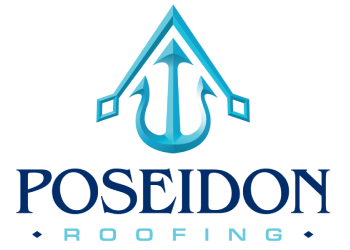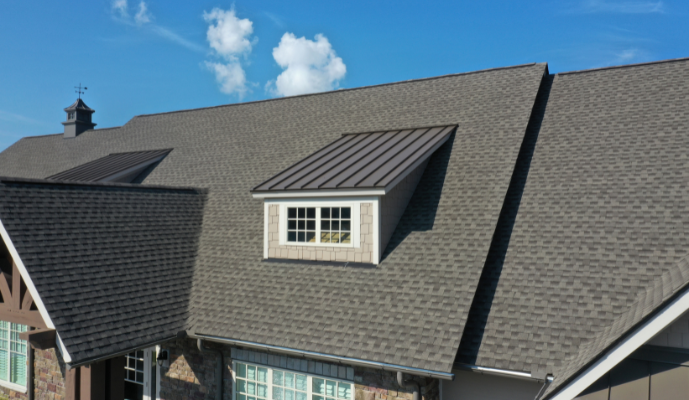Have You Experienced Issues with Moisture Buildup in Your Attic?
This blog explains roof ventilation and its importance in moisture control. It outlines clear signs of insufficient roof ventilation and practical strategies to improve it. Homeowners will learn how climate influences ventilation needs and what costs to expect from viable solutions. The content provides straightforward answers to common concerns, ensuring readers gain useful insights to maintain a sturdy roof with Eagle Roofing services.
Understanding Roof Ventilation and Its Importance in Moisture Control
Definition and Function of Roof Ventilation
Roof ventilation refers to a system that facilitates the movement of air within the roofing assembly, ensuring that warmer air escapes through a ridge vent roof and cooler air enters via gable end vents. This process minimizes humidity levels and prevents moisture accumulation by promoting balanced air circulation.
The system uses components such as an attic ventilation fan and relies on solar energy to help drive natural airflow, reducing the risk of the interior structure being compromised by excess moisture. This setup supports a dry attic environment, which considerably lowers the risk of damage linked to prolonged humidity exposure.
How Roof Ventilation Prevents Moisture Accumulation
Proper roof ventilation facilitates efficient air circulation that minimizes moisture retention and prevents the formation of an ice dam. By incorporating features such as fascia vents and metal components, the system naturally limits moisture buildup without depending heavily on electricity.
Effective airflow in a roof system protects the structure by dispersing humid air and maintaining a balanced temperature profile. This approach not only prevents moisture from accumulating but also supports the long-term integrity of a roof, ensuring reliable performance and durability.
Recognizing Key Components of Roof Ventilation Systems
Effective roof ventilation systems incorporate elements such as Lomanco vents, specialized foam insulation, and design features that optimize the stack effect to manage temperature and moisture within a building. These components actively control climate conditions by directing air movement appropriately, reducing the occurrence of dampness that can lead to building deterioration.
The Role of Airflow in Effective Moisture Management
Effective airflow plays a crucial role in managing moisture as it establishes a continuous path for air to remove water and rain residue from the roofing system, thereby preserving the structure’s integrity without consuming extra energy. Optimized ventilation, measured by the length of airflow channels and well-placed window-like vents, facilitates a balanced exchange that prevents the accumulation of dampness.
Common Types of Roof Ventilation Methods
Many modern roofing systems incorporate ridge vents strategically positioned to optimize natural wind flow, reducing pressure differences across the roof structure. This setup minimizes the risk of a leak along the rafters and other vulnerable points by allowing cool wind to replace warm, moisture-laden air efficiently.
Practitioners often recommend combining natural airflow with mechanical measures to regulate air pressure and temperature within the roofing assembly. Such methods ensure that wind reaches all sections of the roof and prevents moisture buildup that can weaken rafters and cause leaks over time.
Signs of Insufficient Roof Ventilation
Identifying Moisture Damage Symptoms
Moisture damage and ice dams can signal ventilation concerns. Poor air circulation often shows through visual cues like blocked gooseneck vents or intake issues that affect server and air conditioning performance, even in systems using wind turbine methods. These signs indicate areas needing close inspection for optimal roof performance.
Homeowners can notice signs of moisture damage when areas under the roof show discoloration or water stains, indicating that the passive ventilation system, including effective eave vents and a gable vent, may not be performing well. This observation is critical for those using commercial roofing solutions, as insufficient airflow can lead to structural issues that are quickly visible even when browsing the internet for quick fixes.
Regular inspections may reveal peeling paint or warped materials, which signal possible moisture problems in poorly ventilated spaces. Experts recommend evaluating passive ventilation and ensuring that components like eave vents and gable vents are clear and functional, supporting a robust and reliable commercial roofing system.
Strategies for Effective Roof Ventilation
Best Practices for Installing Roof Ventilation Systems
When installing roof ventilation systems, a roofer should aim to create an optimal balance between intake and exhaust paths to enhance airflow while managing heat buildup effectively. A proper installation approach may include using a roof fan for controlled air movement, ensuring that the system supports long-term warranty protection through improved ventilation performance.
Balancing Intake and Exhaust Vents for Optimal Performance
The balance of intake and exhaust vents plays a critical role in maintaining a healthy roofing system by ensuring consistent air circulation. An optimized setup that pairs a well-placed ridge vent with complementary intake points prevents moisture buildup and reduces the risk of mold, thereby protecting the overall structure.
A proper ventilation system may incorporate a solar attic fan combined with strategically installed louvers to promote efficient airflow. This method not only alleviates moisture accumulation but also supports an environmentally friendly approach that minimizes mold formation and extends the roof’s lifespan.
Seasonal Maintenance Tips for Roof Ventilation
Seasonal maintenance of roof ventilation systems involves inspecting all components of the roofing assembly, including roof tile vents, to ensure proper airflow. Homeowners are advised to check the condition of wood structures and fascia to prevent moisture retention that may compromise a commercial roof.
Routine checks during changing weather conditions support long-term performance by verifying that roof tile vents function as intended. Experts in the field recommend examining the fascia and underlying wood to quickly address any signs of wear before they affect the overall integrity of a commercial roof.
Cost Considerations of Roof Ventilation Solutions
Budgeting for Installation and Maintenance
Experts advise that budgeting for roof ventilation installation involves evaluating both upfront installation costs and ongoing maintenance expenses to ensure long-term success. A well-planned budget supports investments in quality materials and labor, which in turn minimizes moisture damage and extends the life of the roofing structure.
Evaluating the Long-Term Benefits of Proper Ventilation
Poseidon Roofing noted that proper roof ventilation pays off in the long term by reducing moisture damage and extending the roofing system’s lifespan. Effective ventilation lowers maintenance costs while keeping the structure secure, making it a valuable investment for homeowners concerned with long-term durability.
Frequently Asked Questions About Roof Ventilation
What Is the Ideal Ventilation Ratio for Roofs?
The ideal ventilation ratio for roofs typically ranges between 1:150 and 1:300, meaning that for every 150 to 300 square feet of attic space, one square foot of net free ventilation is needed. This balanced ratio ensures that air flows efficiently through the roofing system, reducing moisture buildup and protecting the structure from damage.
How Often Should Roof Ventilation Be Inspected?
Experts recommend inspecting roof ventilation at least once per year to maintain optimal airflow and prevent moisture damage. Regular assessments help identify any blockages or wear in vents, allowing timely repairs to preserve the roof’s integrity.
Conclusion
Understanding roof ventilation plays a critical role in preserving roof longevity by controlling moisture levels effectively. The system’s well-planned components, such as intake and exhaust vents, work together to create balanced airflow. Homeowners benefit from regular inspections and timely maintenance that safeguard the structure against moisture-related damage. This topic underscores actionable insights for ensuring a robust and durable roofing system that withstands weather challenges.

